-
 © Bugatti
© Bugatti -
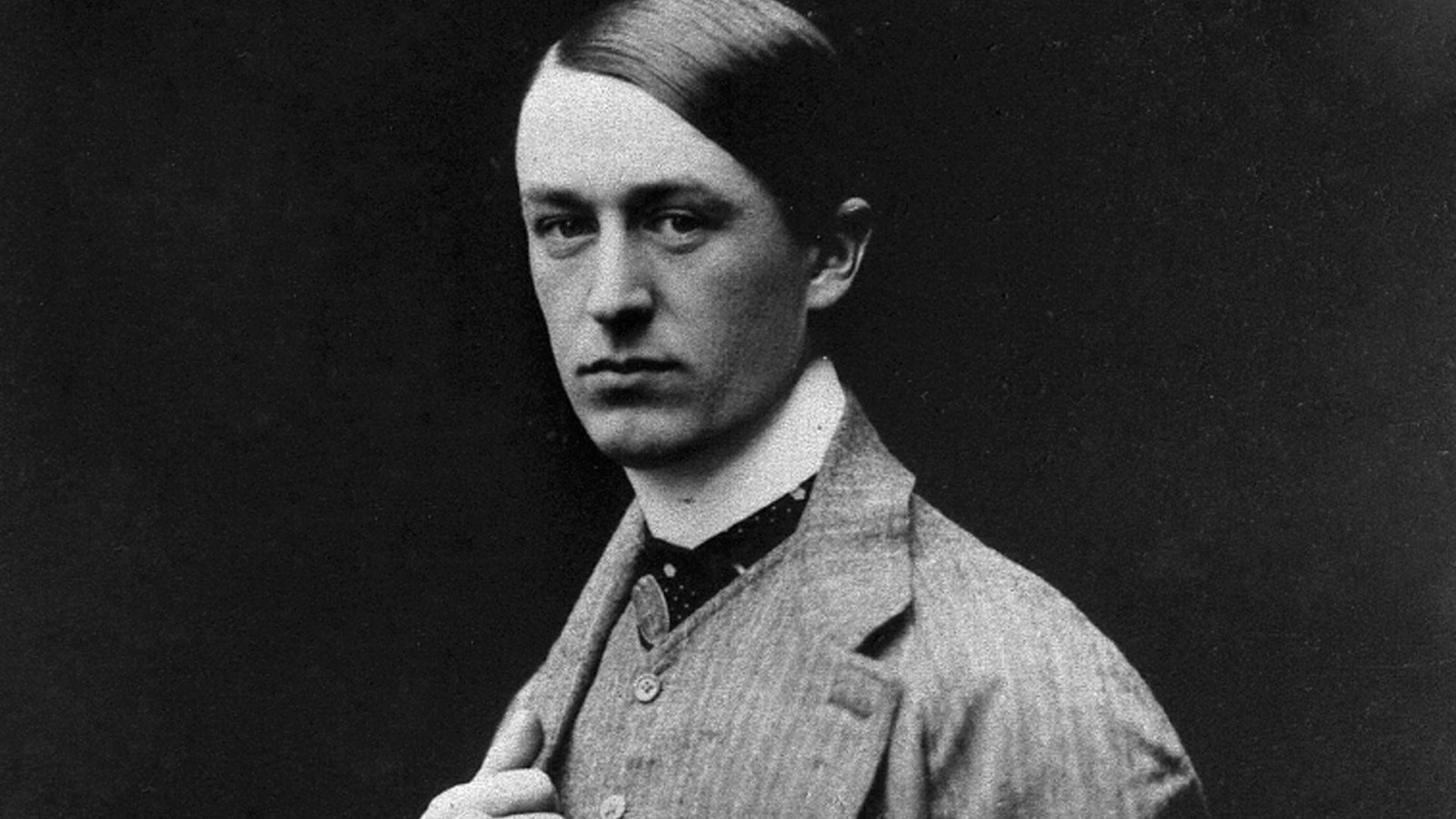 © Bugatti
© Bugatti -
 © Bugatti
© Bugatti -
 © Bugatti
© Bugatti -
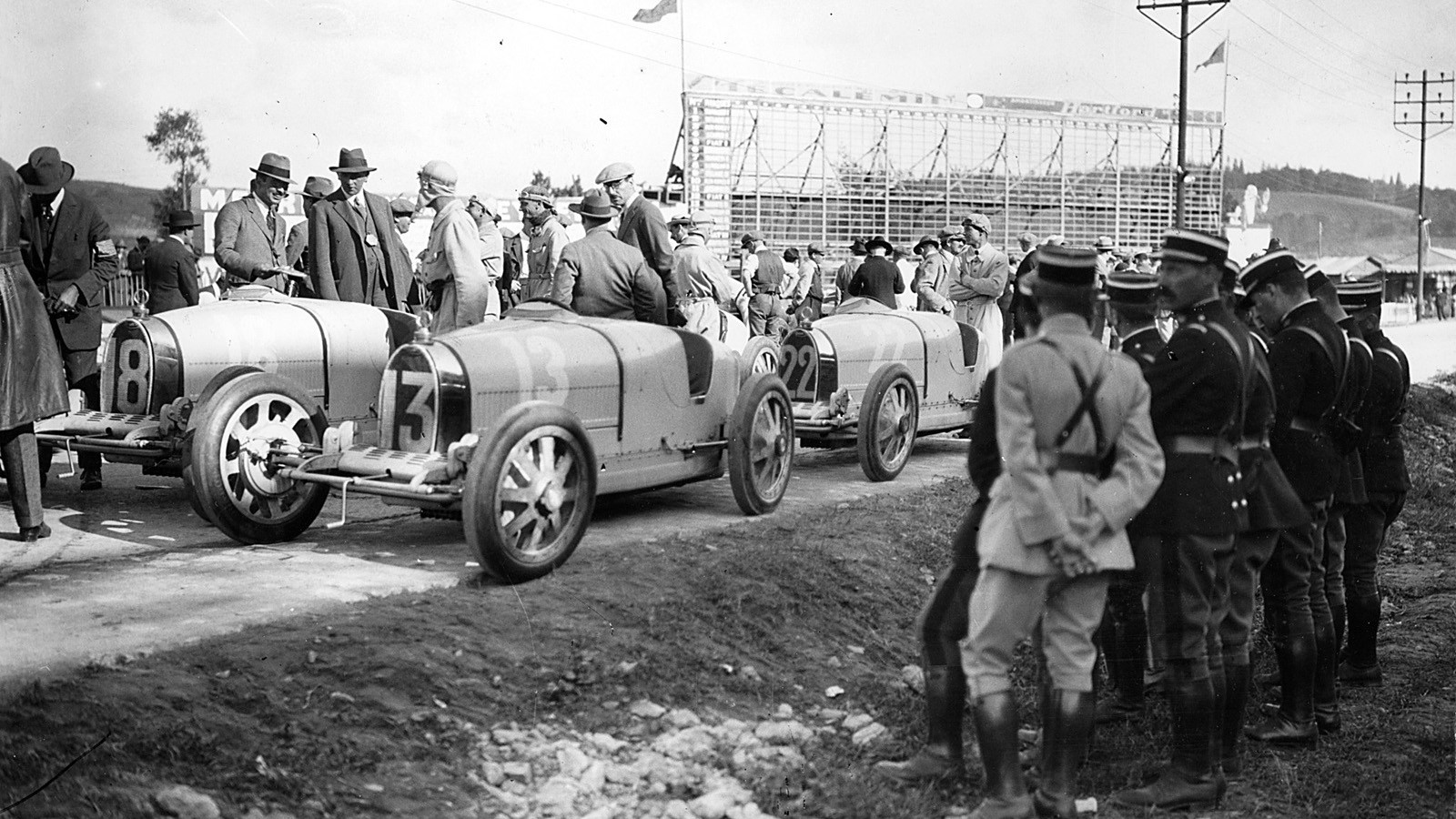 © Bugatti
© Bugatti -
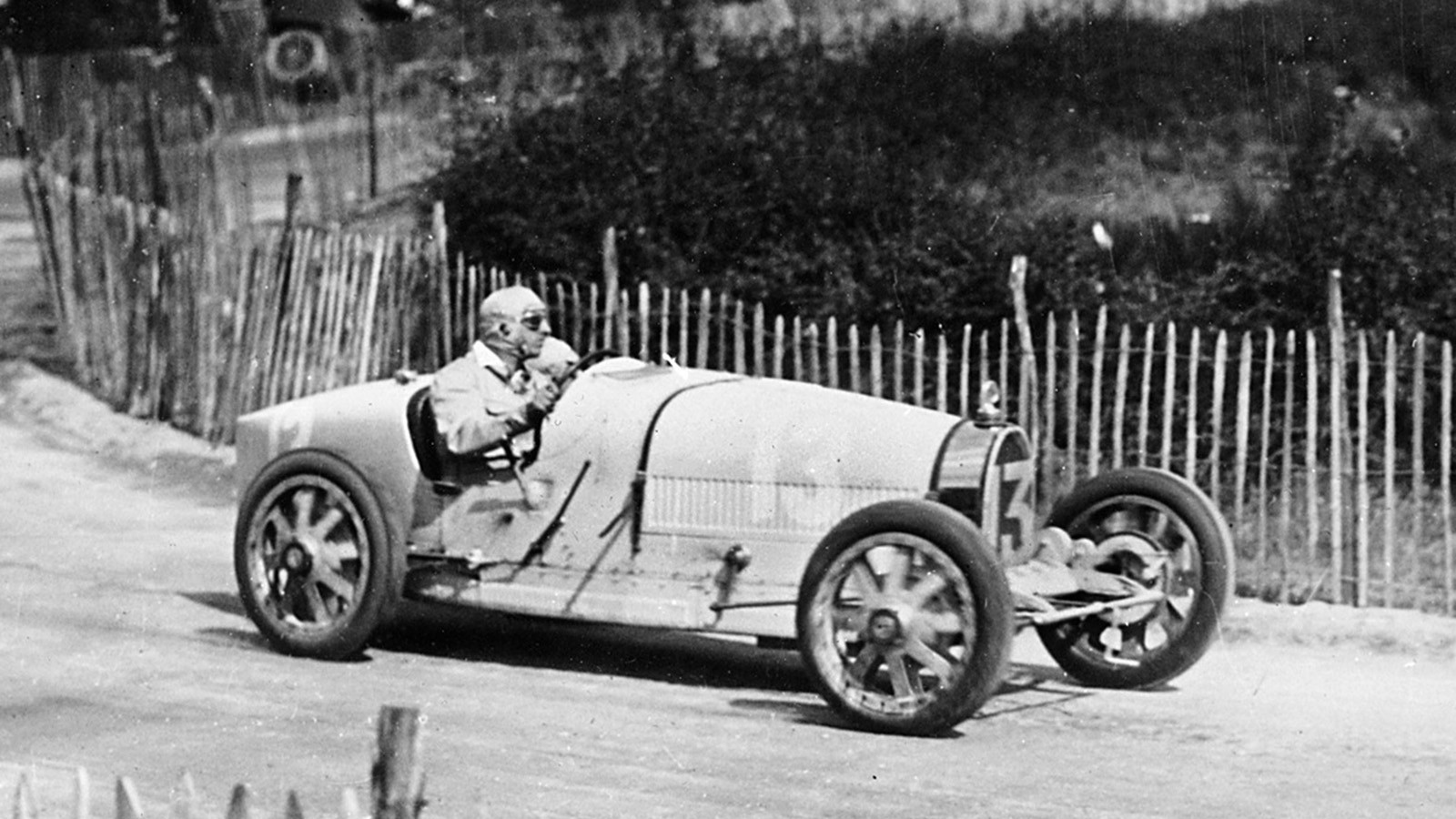 © Bugatti
© Bugatti -
 © Peter Singhoff/Artcurial
© Peter Singhoff/Artcurial -
 © Worldwide Auctioneers
© Worldwide Auctioneers -
 © Bugatti
© Bugatti -
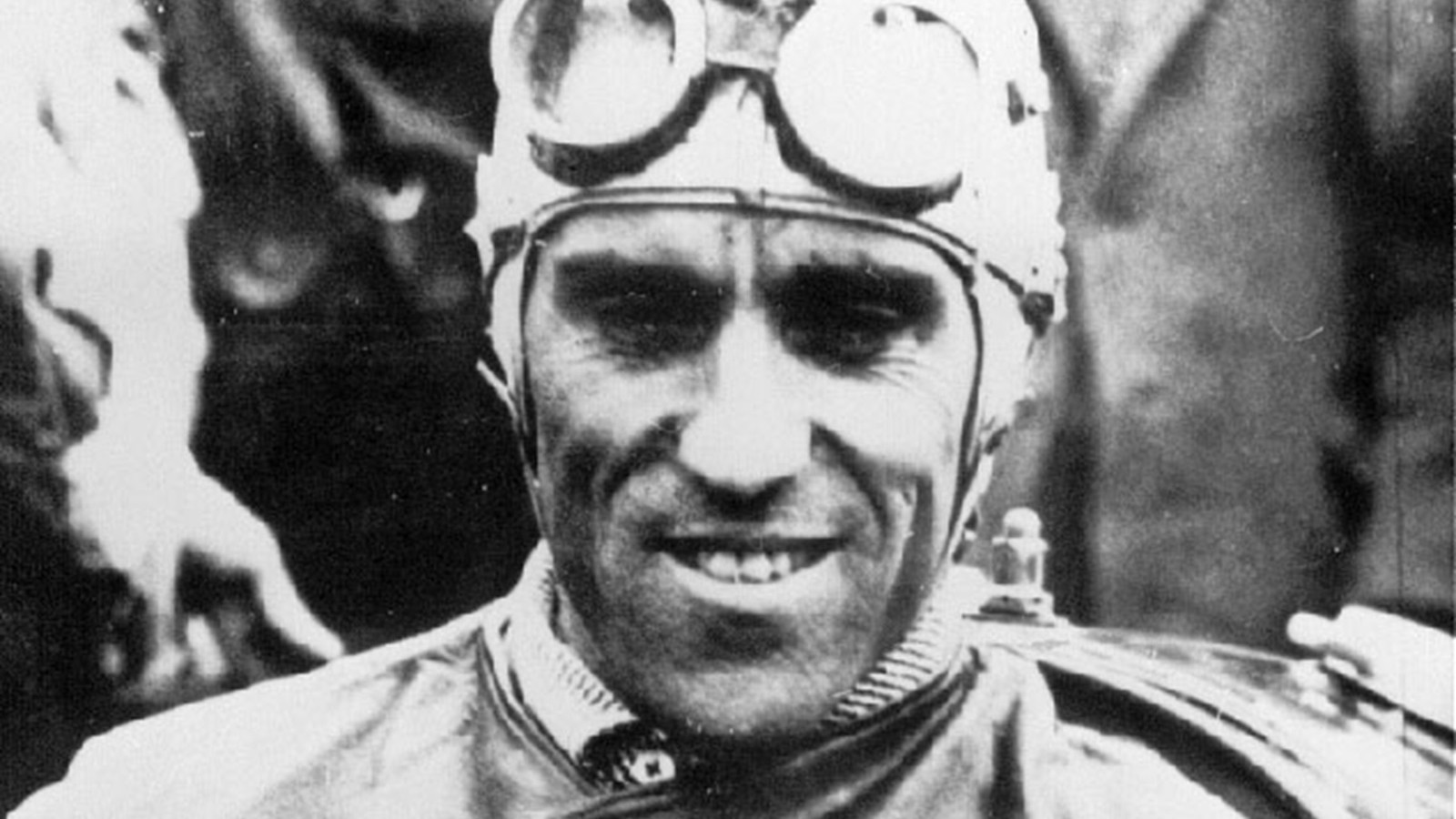 © Maserati
© Maserati -
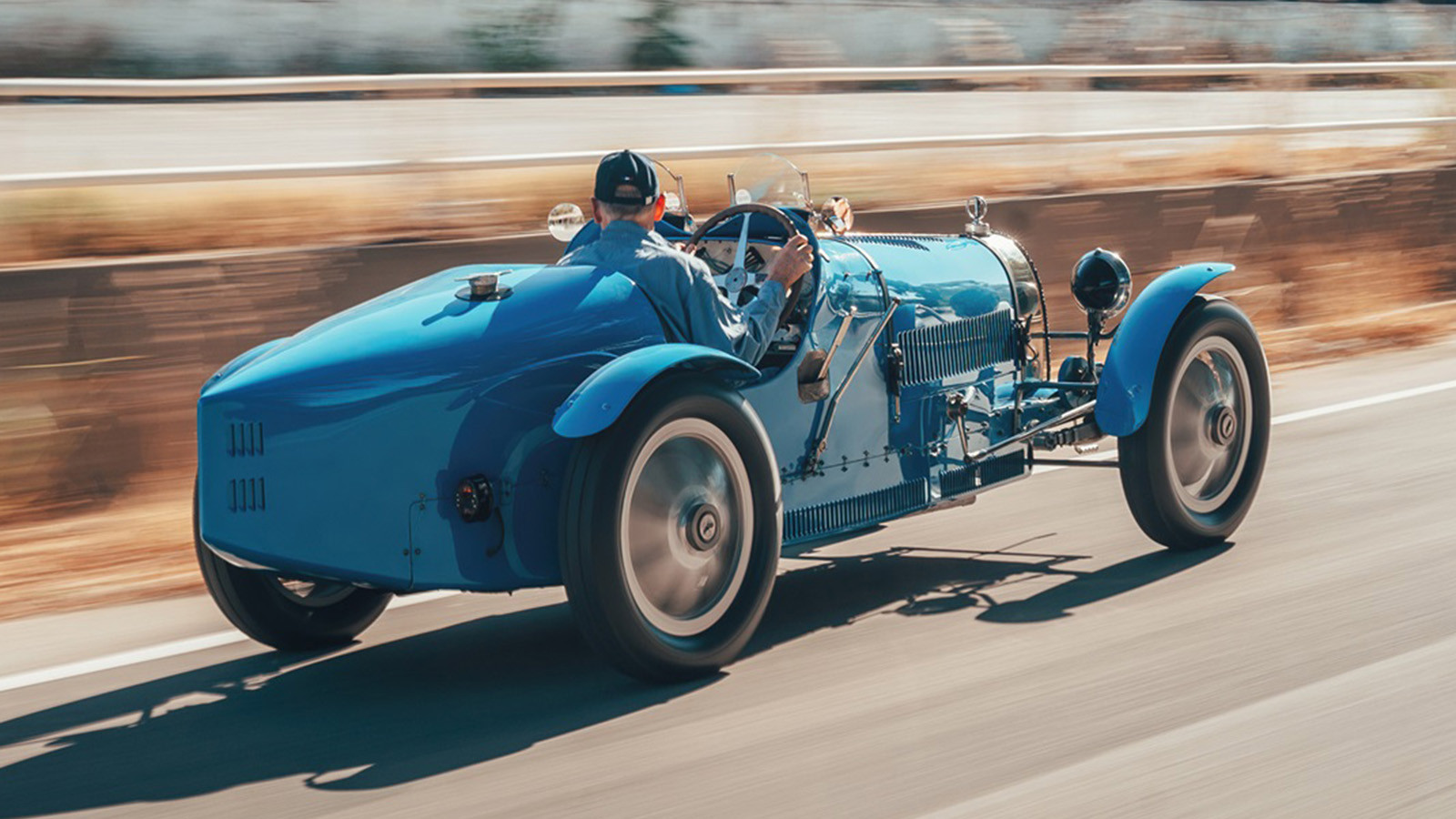 © Bugatti
© Bugatti -
 © Gooding & Company
© Gooding & Company -
 © Bugatti
© Bugatti -
 © Bonhams|Cars
© Bonhams|Cars -
 © Artcurial
© Artcurial -
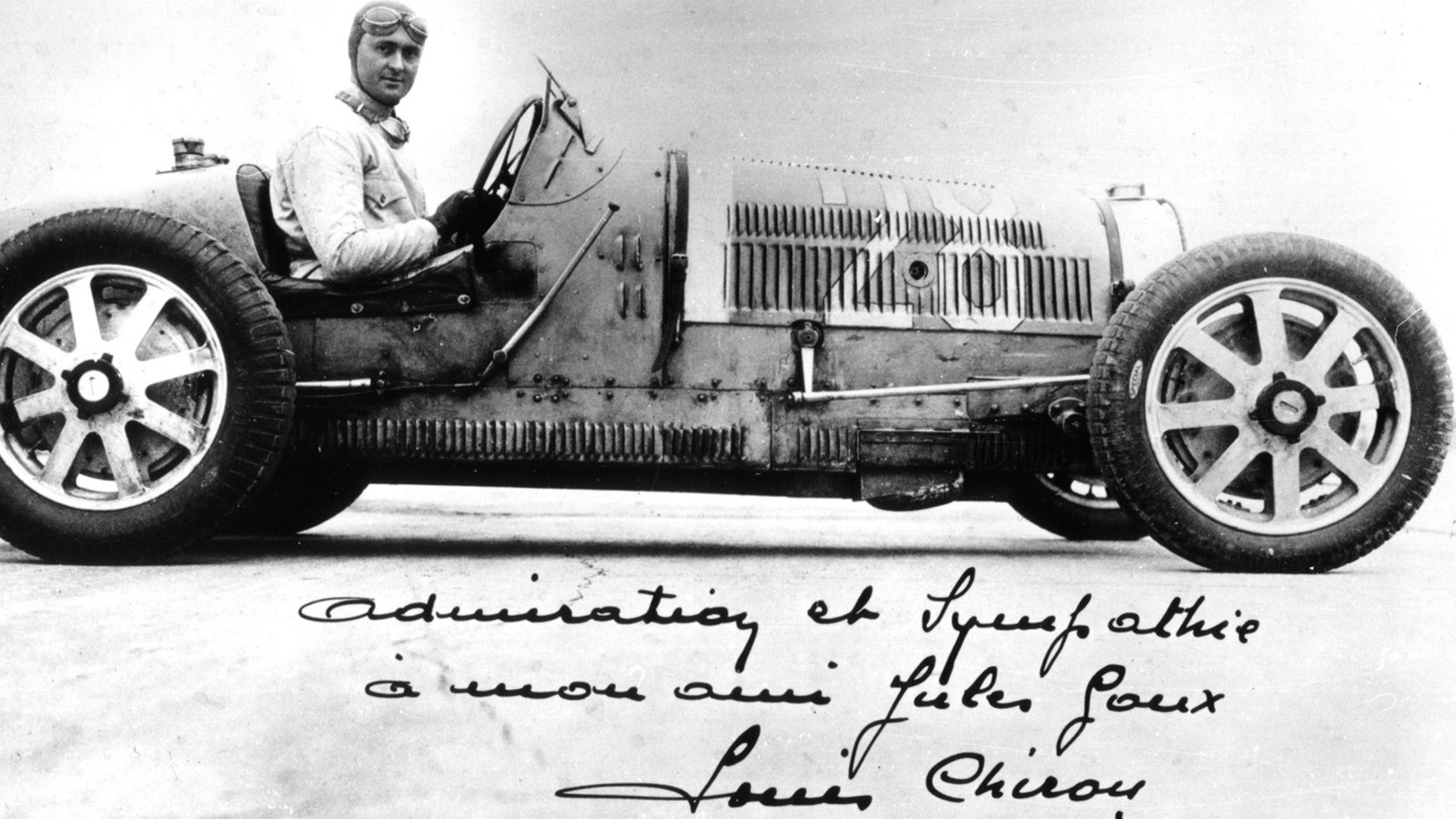 © Bugatti
© Bugatti -
 © Bugatti
© Bugatti -
 © Public domain
© Public domain -
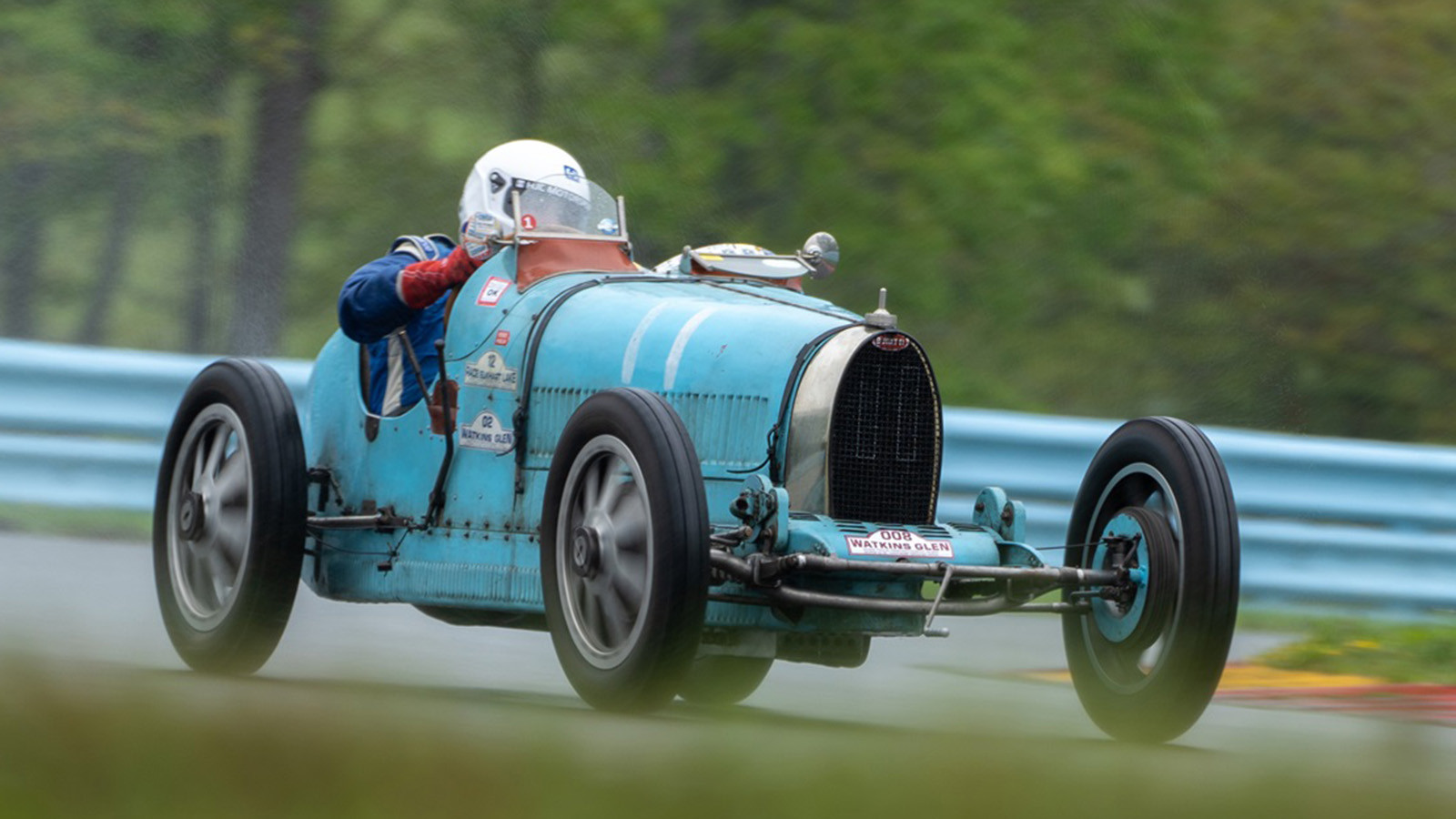 © Bugatti
© Bugatti -
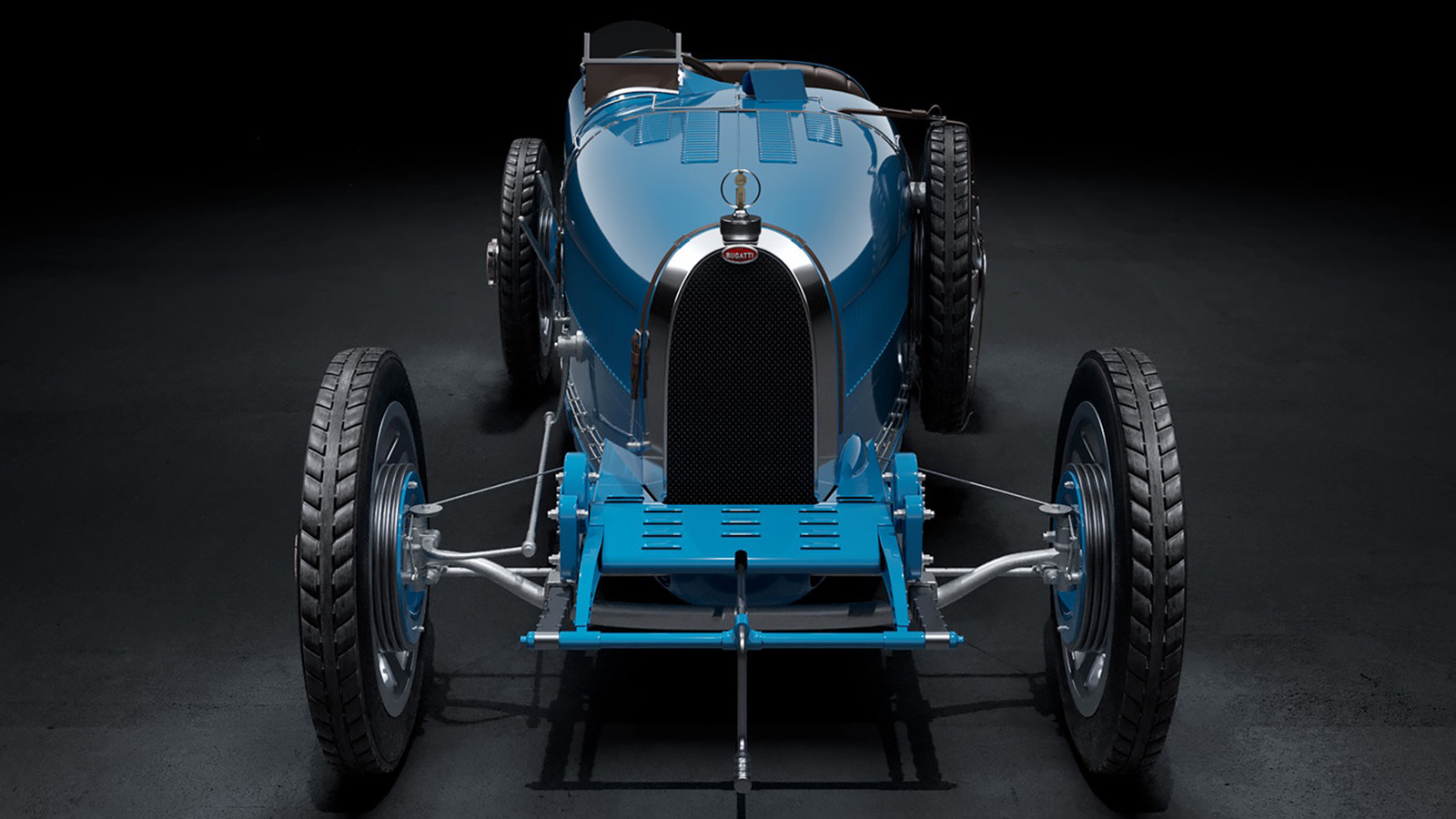 © Bugatti
© Bugatti -
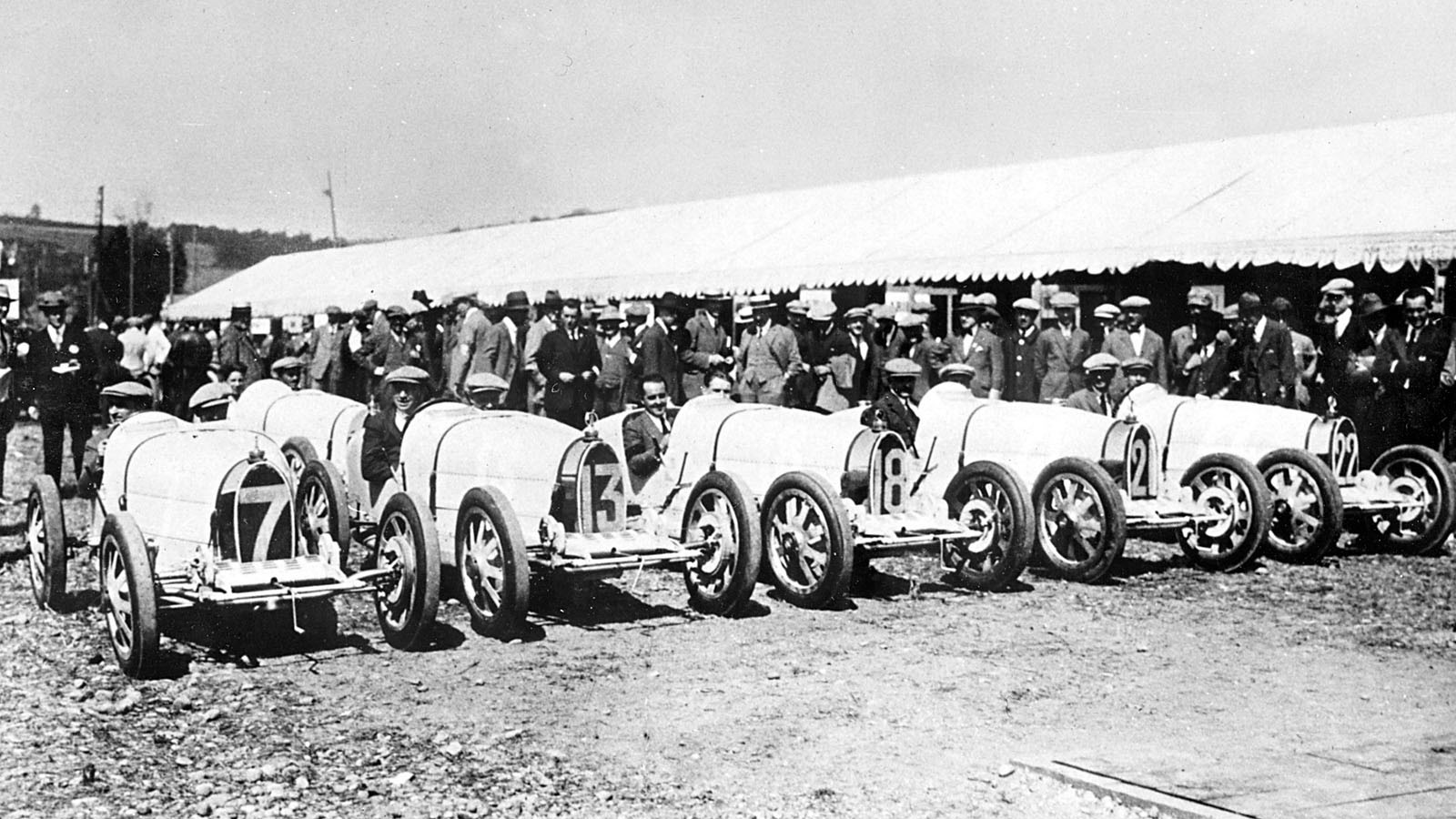 © Bugatti
© Bugatti
-
A century of success
It’s 100 years since the Bugatti Type 35 was introduced and it quickly went on to be a must-have racing car.
Success followed just as rapidly and the model racked up more than 2000 wins in period.
Today, the Bugatti Type 35 is a blue-chip classic car and still being campaigned to great effect.
Here we take a look at the Bugatti Type 35’s development and highlights, and some of the key names in its history.
-
Ettore Bugatti
The Type 35 encapsulated all that Ettore Bugatti had worked for ever since he founded his own car company in 1909.
His first car, the Type 10, used the same ideas of light weight, innovative design and a powerful engine, that would be used in many of his racing and road cars.
A natural engineer, Ettore also had a keen eye for what looked right, so his cars mixed form and function in a way few others could rival.
He learned his trade initially working on motorised tricycles, before working for De Dietrich and Deutz.
In his lifetime, Ettore Bugatti registered more than 1000 patents in his name, including several related to the Type 35.
-
Purpose-built racing car
Bugatti launched the Type 35 in 1924 to be a racing car.
It was also capable of being used on the road and, unlike many factory racers, it was not just for the company’s use – anyone with the money could buy one to compete in.
In creating this car, Bugatti pushed his own firm’s boundaries further to build a car without compromise.
The materials it was made from and the precision of its engineering put it far ahead of almost anything else on offer.
As well as the clever engineering of the Bugatti Type 35, it was also very different in its appearance thanks to its low-slung looks compared to the much taller designs of its competitors.
-
Eight-cylinder engine
While designing the Type 35, Bugatti took out patents on a number of elements of the car, including for the double roller bearing and triple ball bearing that supported an aluminium crankshaft for the engine.
This innovative set-up allowed the straight-eight motor to rev at up to 6000rpm.
The engine was introduced as a 2-litre unit and it allowed the Type 35 to hit a top speed of 118mph, which later rose to as high as 134mph with the 2.3-litre supercharged version of the engine.
-
A first foray
The first competition outing for the new Bugatti Type 35 was the 1924 French Grand Prix at Lyon.
Five cars were entered by the factory and driven from Molsheim to the track for the 35-lap event held over a 23.1km (14.4-mile) circuit.
The journey down to Lyon showed the Type 35s were in good health. When they arrived, the Bugattis were fitted with stone guards for the radiator and a thermometer on the radiator cap in the driver’s line of sight.
The drivers were Jean Chassagne, Pierre de Vizcaya, Leonico Garnier, Ernest Friderich and Bartolomeo Costantini.
Despite this array of talent, things did not go well for the Type 35s, because some mechanical issues were compounded by tyres that had not been properly vulcanised.
Soon after, Bugatti switched tyre supplier and racing triumphs were not long in following.
-
Competition success
After the trials of the 1924 French Grand Prix, the Bugatti Type 35 was back in force at the San Sebastian Grand Prix in northern Spain.
During the race, Costantini set the fastest lap and finished in second place, just behind the winner Albert Guyot in a Rolland-Pillain.
While not a victory for Bugatti, it proved the reliability and speed of the Type 35, and assuaged any fears about the car’s ability to those customers who had already taken delivery of their Type 35s.
The San Sebastian Grand Prix went on to be a happy hunting ground for Bugatti, with four back-to-back wins there between 1926 and 1929.
-
Aluminium wheels
Perhaps the most immediately recognisable feature of the Bugatti Type 35 is its cast alloy wheels.
This design was very unusual for the period, when wire wheels were very much the norm for sporting cars.
Using a cast alloy wheel saved weight, both overall and unsprung, to help the Type 35’s performance and handling.
The wheel had an integral brake drum, further reducing weight, while the hollow front axle tube also contributed to the car’s lightness and handling ability.
Bugatti was not the first to come up with an alloy wheel design, because it had been proposed by Harry A Miller in the USA, but Bugatti was the first to put it into production.
However, not all Type 35s used this wheel and some were fitted with more commonplace wire wheels.
-
Bugatti Type 35A
The Type 35A was introduced by Bugatti a year after the launch of the 35.
The 35A was intended much more as a road car than the competition-bred 35, though it was hard to spot the difference beyond most 35As leaving the factory on wire wheels.
Under the bonnet, the Type 35A came with an engine that was a little less exotic in its specification and used plain bearings for the crankshaft in place of the original double roller bearings.
There were also smaller valves and coil ignition.
While not as powerful as the Type 35, the 35A could still carry the car to a 90mph top speed.
-
1926 Grand Prix World Championship
The 1926 Grand Prix season marked the real beginning of Bugatti’s dominance of motorsport in Europe and beyond, with drivers like Bartolomeo Costantini (centre), seen with Etorre Bugatti (on right).
Even though the 1926 GP season was marred by small grids, Bugatti still had to race for wins and took three out of the five Grands Prix victories that year.
In the end, Bugattis won the French, San Sebastian and Italian rounds, and took the manufacturers’ title.
There were also a considerable number of non-championship races that year, and Bugatti claimed 15 of them, though not all with the Type 35.
Some races were won by the Bugatti Type 39 that was essentially a Type 35 with a 1.5-litre engine, while the Circuito di Alessandria in Italy was won by an older Type 22 Brescia.
-
Tazio Nuvolari
Although most closely associated with Alfa Romeo, Scuderia Ferrari and Auto Union, Tazio Nuvolari helped Bugatti to a couple of notable victories to underscore the reputation of the Type 35.
In the 1927 Rome Grand Prix, Nuvolari came home first after completing 100 laps of the 4.2km (2.6-mile) street circuit at Parioli – this was just 45 secs ahead of second-placed Mario Lepori in another Bugatti.
What was also impressive about this race is that 14 cars out of the 19 starters were Bugattis, and of the 10 cars that finished, eight of them were Bugattis.
In 1928, Nuvolari again won in a Bugatti Type 35C at the Tripoli Grand Prix, and then twice more in Verona and Alessandria in Italy.
-
Enclosed rear suspension
The sleek looks of the Type 35 had more to do with Ettore Bugatti’s eye for form rather than aerodynamic concerns, but this car was unusual for having its rear suspension enclosed within the bodywork.
This design gave the Type 35 a sleeker shape, though there was nothing radical about its live rear axle, reversed quarter-elliptic leaf springs and friction dampers.
All of this was wrapped in a body made of an alloy specified by Bugatti, so that it was as light and strong as possible to complement the rest of the car’s pared-back ethos, that meant the Type 35 tipped the scales at 750kg (1653lb).
-
Bugatti Type 35C
Alphabetical order was not a concern for Bugatti, so the Type 35C preceded the later 35B.
In this case, the ‘C’ stood for compressor and referenced the Roots supercharger used to boost the 2-litre engine’s power.
The Type 35C came with a single Zenith carburettor rather than the twin Solex carbs used on earlier Type 35s. With this set-up, the 35C was capable of 120mph.
Other changes for the Type 35C included revised brakes and an uprated radiator to deal with increased cooling demands.
Bugatti built around 50 Type 35Cs between 1926 and 1930.
-
Targa Florio
If Bugatti’s first foray into racing with the Type 35 was forgettable, the company’s run of success in the Targa Florio was truly memorable.
Between 1925 and 1929, the Bugatti Type 35 was unbeatable in this tough Sicilian road race, which suited the 35’s mix of speed, handling and proven reliability.
Bartolomeo Costantini won the first two Targa Florio titles for Bugatti, followed by Emilio Materassi in 1927, while Albert Divo added the final two wins.
Divo also set the fastest time out of the five victories in his Bugatti Type 35C at 7hrs 15mins 41.7secs.
-
Baby Bugatti
What became known as the Baby Bugatti started as a one-off from Ettore as a present for his eldest son Roland.
It was clearly a scaled-down version of the Type 35, and used a 12-volt battery and electric motor to achieve a top speed of 15mph.
When Bugatti showed off the child’s car at the Milan Automobile Salon, there was so much interest that it made sense to put the car into production.
It gained an official model number as the Type 52, but most referred to it as the ‘Baby’ Bugatti.
Around 500 of these perfectly detailed electric cars were made, which is more than the total production of the full-size Type 35.
-
Bugatti Type 35/51 Petit Coupé Friderich
This unique Bugatti Type 35 coupé did not start life as a closed car, but as a factory two-seat open car.
However, Bruno Lafourcade and François Chevalier created the coupé based on a Type 35 bought by Lafourcade in 1968.
The inspiration for the body came from a coupé owned by Ernest Friderich, a former Bugatti agent and racing driver, who commissioned a coupé on a Type 37 chassis.
The Type 35 recreation uses a Type 51 engine without a supercharger, so it can fit within the slender engine compartment and help keep underbonnet temperatures down.
As a result, the car is now recognised as the Type 35/51 Petit Coupé Friderich.
-
Louis Chiron
Louis Chiron’s impressive racing career started in a Bugatti Brescia in 1923 and he remained close to the French company for many years.
His ability was able to shine more brightly when he started to race in a Type 35 in 1926 and he went on to win the Grand Prix du Comminges in France that year.
In 1927, Chiron’s talent earned him a place as a Bugatti factory driver and he claimed victory in a number of Grands Prix.
Alongside Tazio Nuvolari, Chiron was a star in the Type 35 and he won seven GPs in 1928.
-
Bugatti Type 35B
As the Type 35 evolved to keep ahead of rivals and remain competitive, Bugatti developed the 35B.
It was called the 35TC by the factory, which was for ‘Targa Compressor’ and referred to the car’s use in the Targa Florio.
The Type 35B used a 2.3-litre straight-eight motor with a supercharger, that made this the most potent derivative of the model.
It’s thought 37 Bugatti Type 35B cars were built and this model was used to win the 1929 Monaco Grand Prix.
Powerful as the engine was, it didn’t rev as highly as the Type 35C’s and used more fuel that could mean more pitstops in longer races.
-
Eliška Junková
A less well-known but no less impressive racing driver in the Bugatti Type 35 was Eliška Junková, who was more commonly called by her anglicised name Elizabeth Junek.
After early success in a Bugatti Type 30, she went on to build a strong relationship with Ettore Bugatti and campaigned a Type 35 at the Klausenpass hillclimb in 1926.
For 1927, Junek competed at the Targa Florio in a Type 35B and was running well in fourth place when the steering of her car broke and put her out of the race.
Undeterred, she was back in 1928 to take on the Targa Florio in a brand-new Bugatti Type 35B.
She led the race for some time, but a puncture and overheating engine on the last lap saw her drop from second place to fifth at the end.
-
2000 wins and counting
The technical sophistication and dominance of the Bugatti Type 35 is best summed up in the sheer number of race wins the model notched up in its original competitive period.
Between 1924 and 1930, the Type 35 won more than 2000 races.
The exact number is not clear, but among its successes were five outright victories in the Targa Florio, and a superb 72 first places in Grands Prix and other major races.
On top of that, there were other wins for the Type 37 and Type 39 that were developed out of the Type 35.
The Type 35 also racked up large numbers of triumphs in hillclimbs, smaller club meetings and sprints, as well as at meetings at Brooklands and Montlhéry.
-
Front axle
Throughout its active career as a factory competition car, the Bugatti Type 35’s handling and agility were hallmarks of its driving ability.
Much of this dynamic success was due to its clever front-axle design.
Rather than use a heavy, solid front axle, Ettore Bugatti came up with a hollow, one-piece tube style.
This was radical enough on its own, but Bugatti went even further by doing away with the need to attach the suspension leaf spring with U-bolts.
Instead, the leaf springs passed through the axle and the tube was curved in the middle to dip underneath the chassis.
All of this helped with the Bugatti Type 35’s low-slung form and lower centre of gravity to contribute to its superb handling.
-
How many survive?
When the Bugatti Type 35 was eventually replaced by the Type 54 in 1931, it’s thought that around 340 T35s had been built since its introduction in 1924.
However, the exact number is not known for sure, even by Bugatti itself.
Out of that total, it’s thought that 96 were the original Type 35, while the Type 35A was the most numerous version with 139 made.
The Type 35T is the rarest with only 13 built, while 45 Type 35Cs came out of the factory. Production is rounded off with 37 of the Type 35B.
It is thought there are around 126 surviving Bugatti Type 35s currently accounted for worldwide.
We hope you enjoyed this gallery. Please click the ‘Follow’ button above for more super stories from Classic & Sports Car.
